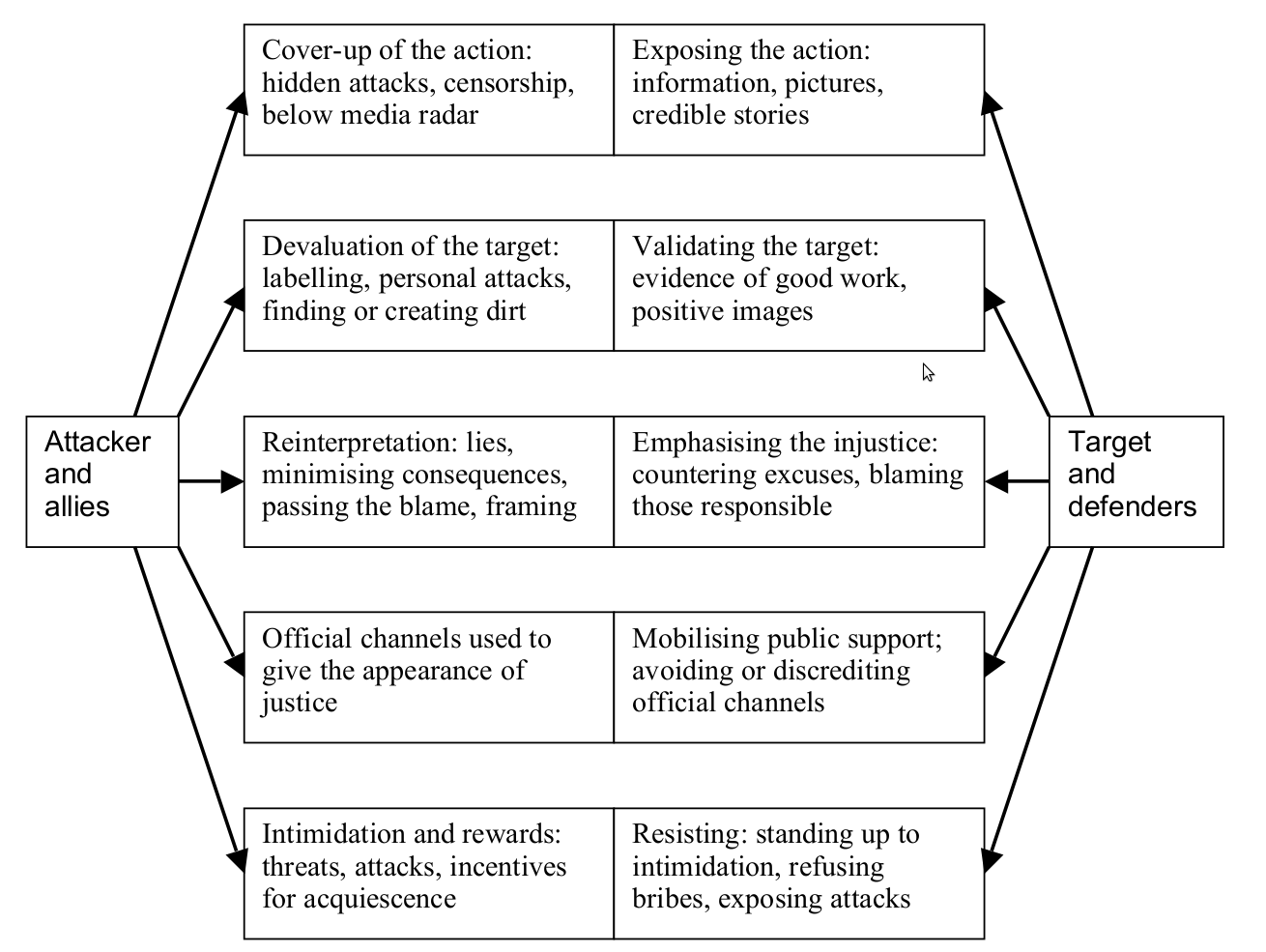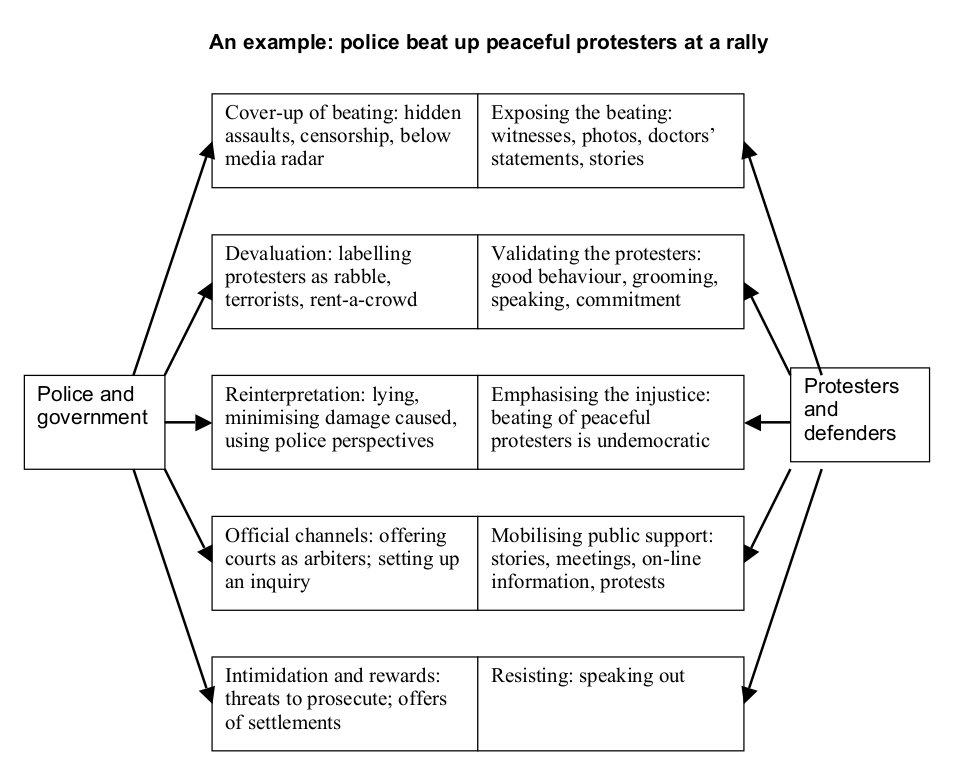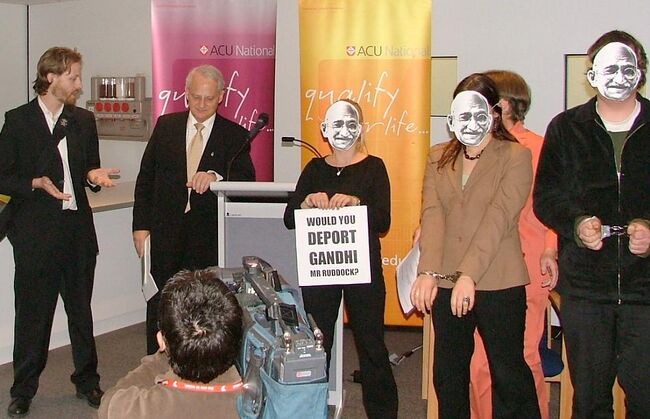Document:Backfire basics
| Summary of Brian Martin's Backfire model |
Subjects: backfire
Source: Unknown
Local copy: File:Backfire basics.pdf
★ Start a Discussion about this document
Backfire basics
Contents
Backfire basics
The keys to backfire
- Reveal: expose the injustice, challenge cover-up
- Redeem: validate the target, challenge devaluation
- Reframe: emphasise the injustice, counter reinterpretation
- Redirect: mobilise support, be wary of official channels
- Resist: stand up to intimidation and bribery
The backfire model is about tactics to oppose injustice.
Backfire: an attack can be said to backfire when it creates more support for or attention to whatever is attacked. Any injustice or norm violation can backfire on the perpetrator.
Backfire can be apparent in adverse public opinion or greater activity by opponents. Even when a perpetrator seems to get away with an injustice, it can be counterproductive in the long term.
Most injustices by powerful groups do not backfire, because they are able to reduce outrage.
Five methods for reducing outrage over injustice
- . Cover up the action
- . Devalue the target
- . Reinterpret what happened
- . Use official channels to give the appearance of justice
- . Intimidate or reward people involved.
Two conditions for backfire
- . An action is perceived as unjust, unfair, excessive or disproportional.
- . Information about the action is communicated to relevant audiences.
Five approaches for increasing outrage over injustice
- . Expose the action
- . Validate the target
- . Emphasise interpretation of the action as an injustice
- . Mobilise public concern (and avoid official channels)
- . Resist and expose intimidation and rewards
An additional consideration: the timing of communication is vital. Three relevant factors that affect reception of a message are:
- . Receptivity: baseline sensitivity to injustice; meaning systems. If people are already concerned about a type of abuse, their reaction to a new case will be stronger. Social movements can create or increase receptivity.
- . The information environment: visibility, salience (compared with other stories). What else is happening? If other important items are on the news, an injustice may receive little media attention.
- . Actionability: existence of social movements, opportunities for action. When activists are prepared to act, a sudden injustice is more likely to backfire.
An example:
The five Rs of revealing, redeeming, reframing, redirecting and resisting can be used in reaction to an injustice or as a way of preventing it. For example, to help prevent police attacks, be prepared by having witnesses and cameras ready, dressing and behaving in an image-enhancing fashion, etc.
Backfire publications
See http://www.bmartin.cc/pubs/backfire.html (or put “Brian Martin backfire” into a search engine) to obtain analyses of tactics used in struggles over censorship, defamation, sexual harassment, deportation of Scott Parkin, police beatings, massacres of peaceful protesters, torture, genocide and other issues.



